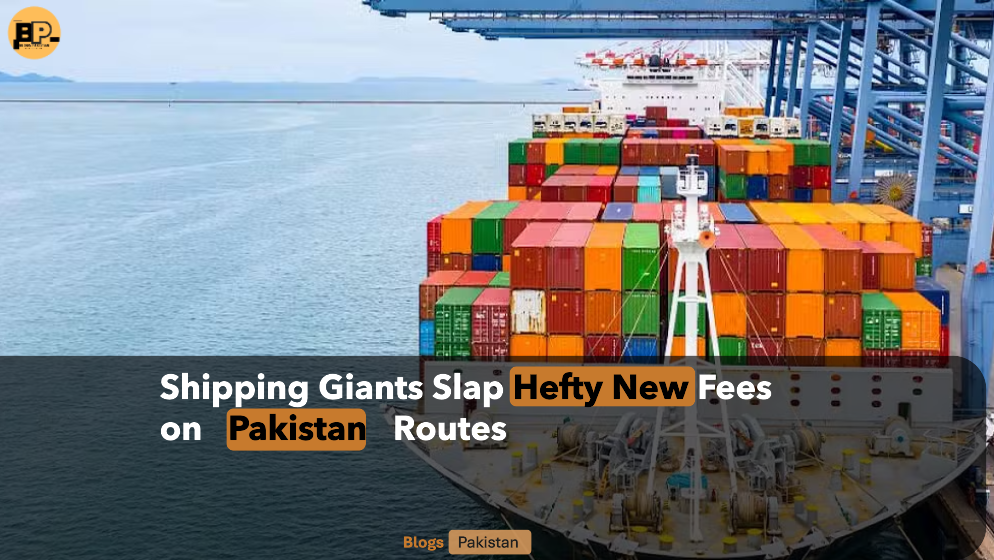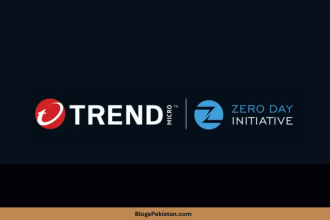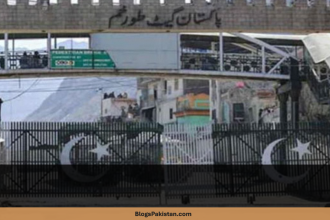International trade faces fresh turbulence as major shipping companies announce steep emergency surcharges on cargo moving to and from Pakistan. Starting May 15, global freight carriers have imposed an Emergency Operational Recovery Surcharge (EORS) ranging from 300to300to800 per container, citing rising operational costs linked to geopolitical tensions and rerouting challenges. The move has sparked outcry among exporters, importers, and industry stakeholders, with fears of prolonged disruptions to supply chains.
Breaking Down the Emergency Surcharge: What You Need to Know
The EORS affects nearly all major trade corridors connected to Pakistan, including routes to Europe, the Mediterranean, the U.S., Africa, and Asia. For shipments bound for the U.S., Latin America, and Australia, the surcharge will remain in effect until June 6. French shipping giant CMA CGM has led the charge, implementing an $800-per-container fee on cargo to Europe, the U.S. East Coast, Africa, and the Middle East. Industry analysts predict competitors like Maersk and Mediterranean Shipping Company (MSC) may soon follow suit.
Why Are Shipping Companies Rerouting Cargo?
To avoid delays and regulatory hurdles, carriers are diverting Pakistan-linked shipments through transshipment hubs like Colombo (Sri Lanka) and Salalah (Oman). This detour adds 7–10 days to delivery times and increases fuel and handling costs—expenses now passed on to businesses. The Pakistan Ship’s Agents Association (PSAA) claims these reroutes stem from India’s recent restrictions aimed at discouraging port calls to Pakistan.
India-Pakistan Trade Tensions: The Hidden Catalyst
While the EORS is framed as an operational necessity, industry insiders point to escalating trade tensions between India and Pakistan as the root cause.
India’s Import Ban and Its Ripple Effects
Last week, India halted all imports and transit of Pakistani goods, blocking an estimated 6,000–7,000 twenty-foot equivalent units (TEUs) of weekly exports from Karachi. This decision—seen as retaliation for Pakistan’s earlier maritime restrictions—has forced shipping lines to rethink their South Asia networks.
Pakistan’s Countermove: A Double-Edged Sword
On May 3, Pakistan’s Ministry of Maritime Affairs banned Indian-flagged vessels from its ports and barred Pakistani ships from docking in India. However, exemptions were made for Reshipment on Board (RoB) cargo and Indian-origin goods transiting through Pakistani ports. This partial allowance aims to prevent total trade paralysis but has done little to ease carrier anxieties.
The Human Cost: How Businesses Are Bearing the Brunt
From textile exporters to electronics importers, Pakistani businesses are scrambling to absorb the surcharge’s financial blow.
Textile Sector Under Siege
Pakistan’s textile industry, which contributes 60% of the country’s exports, faces existential risks. “A $800 surcharge per container could erase our profit margins entirely,” says a Lahore-based garment exporter. With European retailers demanding on-time deliveries, many fear losing contracts to competitors in Bangladesh or Vietnam.
Small Businesses Hit Hardest
Small and medium enterprises (SMEs), which lack the bargaining power of corporate giants, are considering pausing overseas orders. “We’re a family-run pottery business. These fees could shut us down,” explains a Karachi artisan who ships handmade goods to the Middle East.
Karachi Port’s Resilience Amid Chaos
Despite the upheaval, the Karachi Port Trust (KPT) reports normal operations with no congestion—a silver lining for traders. However, this stability is fragile.
The Domino Effect of Rerouting
Diverting cargo to Colombo or Salalah strains regional ports already grappling with capacity limits. Delays at these hubs could create bottlenecks, further inflating freight costs. “It’s a house of cards,” warns a Colombo port official. “One delay here impacts timelines globally.”
Legal Gray Areas: Who’s Liable for the Surcharge?
The EORS has ignited debates over contractual obligations.
Force Majeure or Corporate Opportunism?
Importers argue that geopolitical tensions don’t qualify as force majeure (unforeseeable circumstances), accusing carriers of exploiting the crisis. Legal experts, however, note that shipping contracts often include vague clauses allowing surcharges for “operational disruptions,” leaving businesses with little recourse.
Global Trade Networks at a Crossroads
The Pakistan crisis mirrors broader vulnerabilities in international shipping.
Learning from the Red Sea Crisis
Similar surcharges were imposed during the 2023 Red Sea disruptions, when Houthi attacks forced reroutes around Africa. However, those fees were temporary. The Pakistan situation risks setting a precedent for politicized surcharges becoming the norm.
The Role of Alternative Trade Routes
As tensions persist, traders are exploring rail and air freight options. The China-Pakistan Economic Corridor (CPEC) could gain traction as a land-based alternative, though infrastructure limitations remain a hurdle.
Consumer Impact: Higher Prices on the Horizon
From electronics to automotive parts, consumers worldwide should brace for price hikes.
Retailers Pass Costs to Shoppers
European supermarkets warn of rising prices on Pakistani textiles and surgical instruments. In the U.S., hardware stores anticipate a 10–15% increase in handmade furniture imports from Pakistan.
What’s Next? Uncertainty Looms Over Trade Recovery
With no resolution in sight, stakeholders are preparing for the worst.
Diplomatic Efforts Stagnate
Behind-the-scenes talks between Indian and Pakistani trade officials have yielded no breakthroughs. A Mumbai-based trade analyst notes, “Neither side wants to blink first, and businesses are caught in the crossfire.”
Innovation as a Survival Tactic
Some Pakistani exporters are pivoting to nearshoring—shifting production closer to buyers in Europe or the Middle East. Others are digitizing supply chains to cut costs. “We’re using AI to optimize routes and warehouse space,” shares a Karachi logistics manager.
A Wake-Up Call for Global Shipping
The EORS crisis underscores how geopolitical flashpoints can upend trade networks overnight. As shipping giants navigate choppy waters, the world watches—and pays the price.










